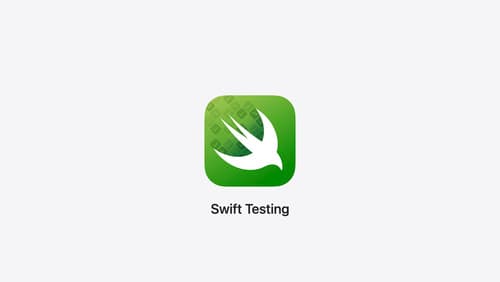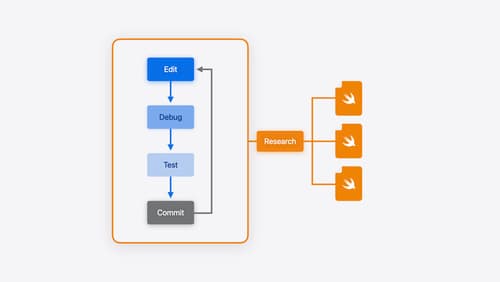tell me about testing
Asked on 2024-08-16
1 search
Testing is a crucial aspect of the development process, as highlighted in several sessions at WWDC 2024. Swift Testing, a modern and open-source testing library, is now the default choice in Xcode 16. It offers powerful and expressive capabilities, making it easier to write and organize tests. Here are some key points about Swift Testing:
-
Building Blocks: To start testing in Swift, you need to add a test bundle target to your project. Swift Testing uses expressive APIs, allowing you to write tests with simple functions and macros like
expectto evaluate Swift expressions. Meet Swift Testing (01:20) covers these building blocks in detail. -
Parallel Testing: Swift Testing supports parallel testing by default, which reduces execution time and helps surface hidden dependencies between tests. This is a significant improvement over XCTest, which only supports parallelization using multiple processes. Go further with Swift Testing (21:36) discusses the basics of parallel testing.
-
Organizing Tests: Swift Testing includes a flexible tagging system to help organize tests. Tags can be used to selectively run tests across your test suite, making it easier to manage large collections of tests. Platforms State of the Union (33:01) introduces these features.
-
Custom Test Descriptions: You can make your types conform to the
CustomTestStringConvertibleprotocol to provide tailored test-specific descriptions, enhancing readability in test reports. This is covered in Go further with Swift Testing (05:54). -
Xcode Integration: Xcode provides tools to run and manage tests efficiently. You can use the test navigator to run all tests or specific ones, and the test report offers detailed insights into test performance and failures. Xcode essentials (29:36) explores these features.
For more detailed information, you can refer to the sessions "Meet Swift Testing" and "Go further with Swift Testing" from WWDC 2024.

Platforms State of the Union
Discover the newest advancements on Apple platforms.

Meet Swift Testing
Introducing Swift Testing: a new package for testing your code using Swift. Explore the building blocks of its powerful new API, discover how it can be applied in common testing workflows, and learn how it relates to XCTest and open source Swift.

Xcode essentials
Edit, debug, commit, repeat. Explore the suite of tools in Xcode that help you iterate quickly when developing apps. Discover tips and tricks to help optimize and boost your development workflow.
